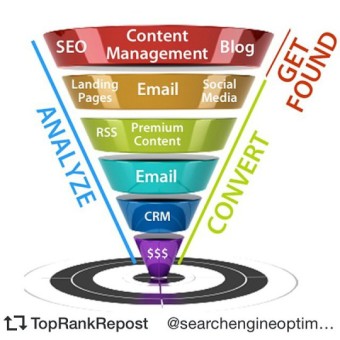I often find that many of my clients have a general understanding of the need for high quality content that is also unique and engaging. Some are even familiar with the phrase that makes me cringe, “Content is king.”
But what else do you know about content marketing?
This is usually the point where I hear those invisible crickets in the form of dead silence.
As a small business owner, marketing is confusing. What’s even worse: people trying to sell you marketing services.
So before you get sucked into a deal that you’re not really sure of, here’s what you need to know about content marketing.
For starters, it’s complicated. The process of creating content is like a puzzle. Several moving pieces need to come together in order for the whole picture to take shape.
Plus, it takes time, which, in this case, could equate to several months.
On top of that, it’s also important to track your results and practice patience. If you’re monitoring your audience’s engagement and making the necessary tweaks, it may not take too long to build, but it still takes time.
But the benefits of an effective content marketing strategy are tremendous. That’s why I specialize in helping small businesses craft the perfect content thanks to developing a unique content strategy.
Develop a Content Marketing Strategy
To help you, I’ve outlined a DIY approach to content marketing. This is a very basic outline of how to develop a content marketing strategy and how you can implement it into your own business.
Without further adieu, let’s dive in.
The first step to your strategy should always be to define your target audience.
Create Customer Avatars
Unfortunately, I’ve seen this step skipped one too many times. Not everyone will be your customer, and that’s okay. Get that out of the way now and narrow down who it is that can really benefit from your product or service.
Define their age range, gender, income, education levels and any other personal details you can imagine.
Remember, your product or service is designed to solve the problems of certain people who are faced with this exact situation that needs solving.
The more detailed your avatars can be, the better.
Generate a List of Topics
Now that you have your customer avatars all setup, you’ll need to brainstorm a list of topics that your target audience would find relevant.
This could be helpful how-to posts or educational articles that relate to your business. The idea is to provide your audience with something of value. Something that does not waste their time either.
To keep this list manageable, I try to start out with a list of 10 topics max. Anything over that in the beginning may never get used.
Once you have your handy dandy list of relevant topics, you’re ready to create an editorial calendar.
Schedule Out Your Topics
Your next step is to physically schedule out the topics from your list on a calendar known as an editorial calendar.
I prefer to have both a digital copy and a paper copy of my calendar. This allows me to use the paper copy as scratch as I work out my ideas, and the digital copy becomes my cleaned up, final version.
Depending on how often you want to post an article—I recommend weekly, if not bi-weekly—you’ll choose which topics will be launched on certain days.
Stick to this schedule to keep your blog consistent and fresh.
You’ll also want to schedule out posts that coincide with events that could be trending in the news or even things like product launches. Maybe you have a special holiday offer. Your best bet is to launch that post at least three weeks ahead of time so you can send promotional emails or newsletter updates to remind customers of what’s to come right up until the end.
Once you have your topics scheduled, it’s time to launch your blog post and track your results.
Track Your Results
With content marketing, you can’t set it and forget it, much like my container gardening adventure. It’s crucial to track your results to see which blog posts resonate best with your audience.
If you keep posting content that you find relevant yet your audience does nothing with it, you’re wasting precious time and money.
Track your results and repeat.
As I mentioned in the beginning, this is only a basic outline of how content marketing works. You can use this as a guide to start crafting your own content marketing strategy or use it as a way to measure if your current marketing efforts involve these essential steps.
Loved the article, but have a question? Feel free to reach out to me via email or let’s collaborate on a content marketing strategy tailored specifically for your business.

